Nestled in the heart of Yunnan Province, China, Dali stands as a cultural and culinary crossroads where the Bai ethnic minority’s traditions blend with influences from Tibet, Sichuan, and Southeast Asia. This region, framed by the azure waters of Erhai Lake and the towering Cangshan Mountains, boasts a cuisine as diverse and vibrant as its landscapes. Dali’s dishes are a testament to its history, geography, and the harmonious coexistence of its people, offering a sensory adventure for food enthusiasts. From pungent cheeses to fiery stews, the culinary landscape here is a mosaic of textures, aromas, and stories. This article delves into the most iconic and beloved specialty dishes of Dali, unraveling their origins, ingredients, and the cultural tapestry that makes them indispensable to the region’s identity.
Dali Milk Fan (Dairy Fan): A Cheese Like No Other
Dali’s Milk Fan, known locally as rǔshān (乳扇), is a dairy delicacy that puzzles and delights in equal measure. Crafted from cow’s or goat’s milk fermented with nigari (a coagulant derived from seawater), this cheese is stretched into thin, translucent sheets, folded like fans, and dried until they resemble golden parchment. The result is a product that balances tanginess with a subtle sweetness, offering a chewy texture that crisps when fried or grilled.
The Bai people, Dali’s largest ethnic group, have perfected Milk Fan over centuries. Traditionally, herders would carry milk in goatskin bags, where it naturally curdled during long treks. Today, artisans still use wooden frames to shape the cheese, often adding floral essences like rose or osmanthus for fragrance. Locals enjoy it deep-fried and sprinkled with sugar, grilled over charcoal with honey, or crumbled into savory dishes. For visitors, Milk Fan is more than food—it’s a symbol of Dali’s dairy mastery and a bridge between pastoral traditions and modern creativity.
Bai-Style Glutinous Rice Cake (Ěrkuài): Sticky, Smoky, and Satisfying
Ěrkuài (饵块), a pillar of Bai cuisine, is a glutinous rice cake that transcends simplicity through its versatility. Made by steaming glutinous rice, pounding it into a paste, and shaping it into thick discs or logs, this ingredient forms the base of countless meals. The name ěrkuài derives from the Bai language, where ěr means “ear” (referring to the cake’s ear-like shape) and kuài means “piece.”
In Dali, ěrkuài is often grilled over open flames until charred and puffy, then sliced into strips and stir-fried with eggs, vegetables, and spicy sauce. Alternatively, it’s boiled in soup or stuffed with sweet bean paste. The cake’s chewy consistency and smoky flavor make it a beloved street food, paired with pickled vegetables or a dipping sauce of chili, garlic, and vinegar. For the Bai, ěrkuài is not just sustenance but a ritual food, offered during festivals and weddings to symbolize unity and prosperity.
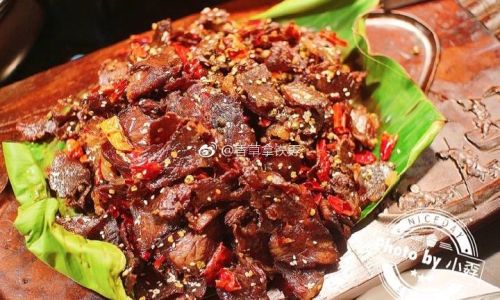
Erhai Lake Fish in Sour Soup: A Tangy Tribute to Freshwater Bounty
Erhai Lake, a shimmering expanse fed by melting snow from the Cangshan Mountains, is the lifeblood of Dali’s aquatic cuisine. The lake’s carp, tilapia, and snakehead fish are prized for their tender flesh and mild flavor, which local chefs elevate with a signature sour soup.
The broth begins with fermented mustard greens, tomatoes, and pickled chilis simmered into a tangy base. The fish is poached until flaky, then garnished with fresh cilantro, mint, and thin slices of ginger. The dish’s acidity cuts through the richness of the fish, while the heat from chilis awakens the palate. For added texture, locals sometimes add miànjiàn (面酱), a fermented soybean paste, or dòufǔ (tofu) to absorb the broth’s flavors. Erhai Lake fish in sour soup is more than a meal—it’s a celebration of the lake’s ecological balance and the Bai people’s ability to transform humble ingredients into culinary poetry.
Yongping Roasted Sheep: A Feast of Fire and Spice
Hailing from Yongping County, just south of Dali, this roasted sheep dish is a carnivore’s dream. Whole lambs are marinated overnight in a blend of cumin, chili powder, garlic, and local herbs, then slow-roasted over an open pit until the skin crackles and the meat falls off the bone. The secret lies in the marinade’s balance of spices and the use of huǒtáng (火塘), a traditional hearth that imparts a smoky depth.
Yongping roasted sheep is typically served during festivals, weddings, or family reunions, where diners tear into the meat with their hands, savoring the interplay of charred crust and juicy interior. The dish reflects Dali’s historical ties to nomadic cultures, where preserving meat through smoking and drying was essential. Today, it symbolizes abundance and communal bonding, with leftovers often repurposed into stews or stir-fries.
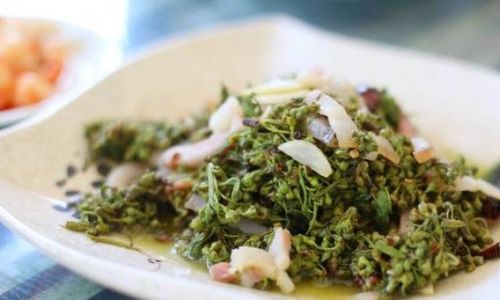
Three-Course Tea Ceremony: Bitter, Sweet, and Reflective
While not a dish in the traditional sense, the Bai people’s Three-Course Tea Ceremony (sān dào chá) is a culinary ritual that embodies Dali’s philosophical spirit. The ceremony unfolds in three acts:
- Bitter Tea: Black tea brewed in a clay pot and poured from a height to create froth, symbolizing life’s hardships.
- Sweet Tea: Tea mixed with brown sugar, nuts, and dried fruits, representing joy and reward.
- Aftertaste Tea: A blend of honey, cinnamon, and flower petals, encouraging reflection on life’s complexities.
Each stage is accompanied by poetic recitations and serves as a metaphor for the human experience. The ceremony is integral to Bai hospitality, often performed during weddings, funerals, or to welcome honored guests. For visitors, it’s a meditative pause, a chance to savor Dali’s cultural depth alongside its flavors.
Jidou Pea Jelly: Cool, Green Relief
Jidou (鸡豆), or “chicken pea,” is a legume native to Yunnan, prized for its vibrant green hue and starchy texture. When ground into a paste and set with lime water, it transforms into a jelly-like block called jīdòufěn (鸡豆粉). Sliced into thin strips and tossed with chili oil, vinegar, garlic, and crushed peanuts, this dish offers a refreshing contrast to Dali’s spicier fare.
Jidou jelly is a street food staple, sold from carts and stalls during sweltering summers. Its coolness soothes the palate, while the peas’ earthy sweetness lingers like a whisper. For the Bai, jidou symbolizes resilience—the plant thrives in poor soil, much like their community has endured through centuries of change.
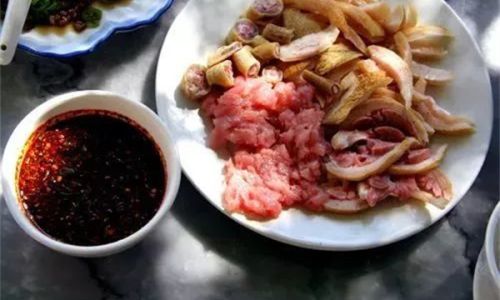
Mushroom Hotpot: Earth’s Umami Bounty
Yunnan is famed as China’s “mushroom kingdom,” and Dali’s rainy seasons unleash a cornucopia of fungi, from prized mátǔ (松茸, matsutake) to exotic yángsùjūn (羊肚菌, morels). Local chefs celebrate this bounty in a communal hotpot, where simmering broth is infused with dried chilis, Sichuan pepper, and wild herbs. Diners dip an array of mushrooms, vegetables, and thinly sliced meats into the pot, savoring each ingredient’s distinct flavor.
The hotpot is a microcosm of Dali’s biodiversity, with each mushroom contributing a unique note: mátǔ offers a piney aroma, niúgānjūn (牛肝菌) a meaty richness, and hóngjū (红菇) a ruby hue. The dish also reflects Dali’s Buddhist heritage, where communal meals emphasize sharing and mindfulness.
Sour and Spicy Pickled Vegetables: Preserving the Seasons
Pickling is an art form in Dali, where the Bai people ferment cabbage, radishes, cucumbers, and chili peppers in earthenware jars. The result is a rainbow of suāncài (酸菜), or sour vegetables, bursting with tangy, fiery flavors. These pickles are eaten as condiments, stir-fried with pork, or stuffed into dumplings.
The process begins in autumn, when families harvest vegetables and layer them with salt, rice bran, and spices. Over months, lacto-fermentation transforms the produce into probiotic-rich treats. For the Bai, pickling is a way to preserve summer’s abundance and honor ancestral traditions. Each jar tells a story—of the hands that tended the crops, the seasons that shaped them, and the tables they’ll grace.
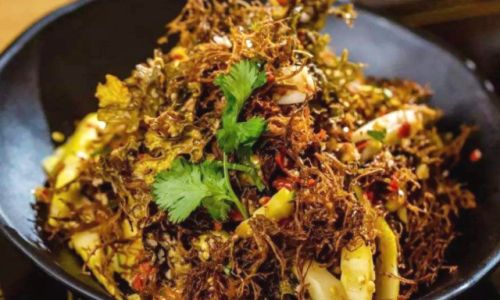
Dali Sand Pot Fish: Slow-Cooked Perfection
Shāguō yú (砂锅鱼), or sand pot fish, is a testament to Dali’s culinary patience. A whole fish (typically carp) is nestled into a clay pot with tomatoes, bamboo shoots, mushrooms, and ham, then simmered over low heat for hours. The clay distributes heat evenly, melting the ingredients into a broth so rich it’s often mopped up with bread or rice.
The dish’s humility belies its complexity. Each element—the fish’s freshness, the ham’s smokiness, the tomatoes’ acidity—harmonizes into a symphony of flavors. For families, shāguō yú is a Sunday ritual, a dish that rewards time and togetherness.
Crossing Bridges Rice Noodles: A Legend in Every Bowl
Though originally from neighboring Mongla, guòqiáomǐxiàn (过桥米线) has become a Dali favorite. The dish’s name honors a scholar’s wife who ferried hot soup across a bridge to her husband, keeping it warm with a layer of oil. Today, diners receive a sizzling bowl of broth, a plate of raw meats, vegetables, and noodles, which they cook à la minute.
The ritual of assembling the bowl—adding ingredients in a specific order—is half the fun. Sliced pork, quail eggs, and herbs bloom in the broth, while rice noodles provide a silky base. For many, guòqiáomǐxiàn is comfort food, a bowl that tells a tale of love, ingenuity, and the joy of shared meals.
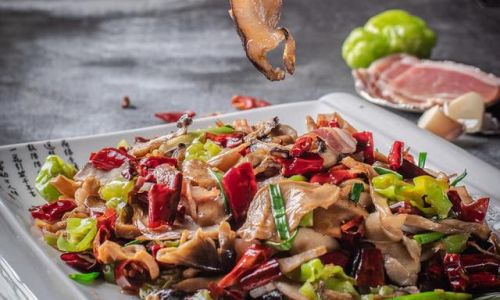
Cultural Significance and Dining Etiquette
Dali’s cuisine is inseparable from its rituals. Meals often begin with a toast of báijiǔ (baijiu, sorghum liquor) and a prayer of gratitude. It’s customary to serve elders first and to leave a little food on the plate as a sign of abundance. Street vendors, meanwhile, embody Dali’s egalitarian spirit, offering the same quality to locals and tourists alike.
Conclusion: A Taste of Dali’s Soul
Dali’s specialty dishes are more than sustenance—they’re chronicles of a region that has weathered empires, embraced diversity, and found beauty in simplicity. From the tang of fermented cheese to the smokiness of roasted lamb, each bite tells a story of resilience, creativity, and the enduring bond between people and land. To savor Dali’s cuisine is to taste the soul of Yunnan, a place where every meal is a journey, and every flavor a reason to return.
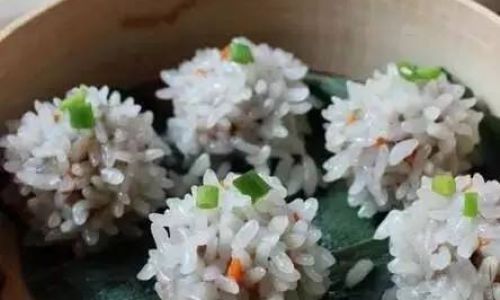
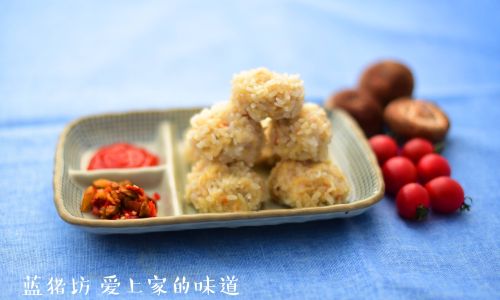
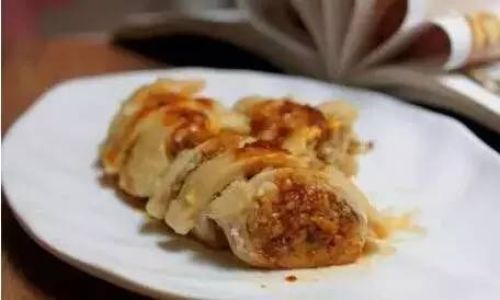
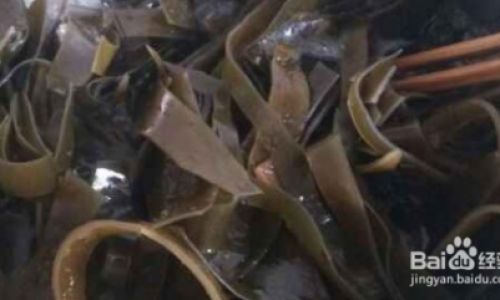
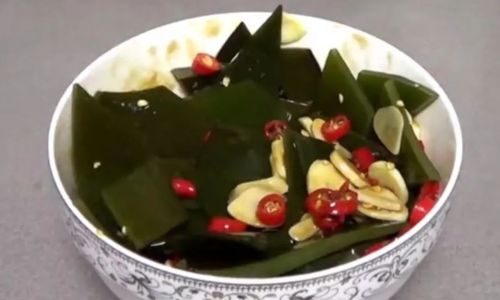
0 comments